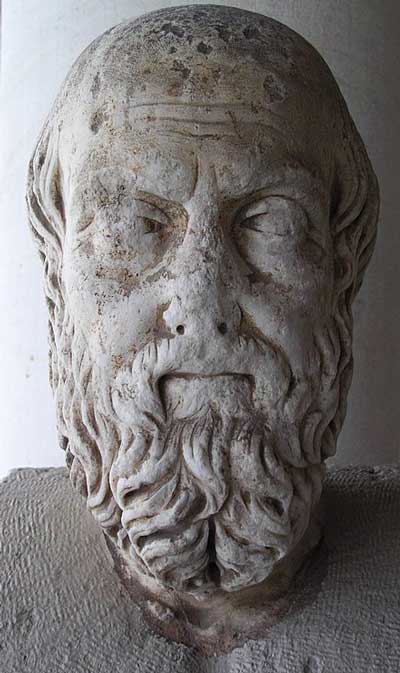The Travel Writer

From Herodot’s Histories
Around 450 BC, Herodotus, the Greek travel writer, describes this area, which covers present-day Ukraine (and stretches of land beyond), as the sphere of life of Scythian tribes. He structures it on the basis of the resources that enable people and animals to survive.
“For their territory is rich in grass and well watered, and rivers run through it that are not much poorer in number than the canals of the Egyptians. I will only name those that have names and are navigable from the [Black] Sea… “
Histories, IV 541
In the first place he mentions the Istros [Danube] with five estuaries, then the Hypanis [Kuban] and especially the Borysthenes [Dnieper]:

“In my opinion, it is the most productive, not only of the Scythian rivers, but also of all others, because it washes the most beautiful and healthiest pastures for the cattle. At its mouth, salt is deposited in abundance. It yields great river fish without bones for salting, which are called Antakaier, and has many other wonderful advantages”.
Histories, IV 541
In Herodot’s Histories, an important consideration is economy, since he does not make his journeys out of tourist curiosity, but describes countries and their inhabitants as a geographer in the interrelationship of man and nature, and takes mythological things rather skeptically:
“The first man in this still barren land was called Targitaos. The parents of this Targitaos were Zeus and a daughter of the stream Borysthenes. So the Scythians report; but I cannot believe it.”
Historien, IV- 537
Nevertheless, it is not obsolete to point to the perception of the world as the playground of gods and nature. That the rational development of the cosmos comes up against the limits of human cognitive ability is a problem even for modern physics.
The Scythians

The areas Herodotus describes were inhabited by Scythians. (IV 505) After the enumeration of their ancestral sagas, he turns to the present (5th century BC). He assumes a “trading place Borysthenes” located in the middle of the Scythian territory bordering the Black Sea. The ancient map shows this city next to Olbia as a Greek colony, inhabited by Scythians, whose way of life he describes as follows:
“They sow grain and eat the fruit, plus onions, garlic, lentils and millet. Besides these, there are the arable Scythians, who sow grain not for their own food but for sale…” The agricultural Scythians inhabit an area that stretches three days to the east… To the north, however, the journey up the Borysthenes passes through their territory for eleven days. The land north of it is largely empty. “
Histories, IV 541
If the Ukrainians are descendants of the Scythians, then – according to Herodotus – they reproduced along the lower reaches of the Dnieper in the region of the productive rivers as peaceful tribes cultivating their fields. But there were also the others, who shaped the reputation of these peoples as unimaginably cruel hordes of horsemen. Herodotus considers the fact that they were nomads to be the reason for their invincibility:
“The Scythian people, as far as we know, have discovered a very important advantage within the human sphere, although I do not admire them for the rest. The great advantage is that no one can escape from them who moves against them, and that no one can catch them if they do not want to be found. People who have founded neither cities nor walls, who carry their dwellings with them, and are all archers on horseback, who live not by agriculture but by cattle-breeding, and whose home rests on wheels-how should not such a people be impregnable and difficult to place, if their land was suitable for it, and the rivers also helped to make it so?”
IV. 537
